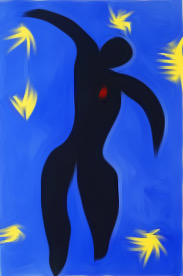Just got back from walking around my yard barefoot in the grass. Usually, it takes me a while before I can feel calm and feel my anxiety going down. I think I shared before how afternoons, especially after lunch, seem to be peak anxiety times for me. Noticing the time of day as well as noticing where we might be feeling the discomfort is part of the tasks of recovery. It's also so important to have a toolkit for managing PTSD symptoms and not all tools work the same so it's really a process of trial and error and curious discovery to see what works best for you. And just because something works now, doesn't always mean that it will keep on working so I feel, it's important to keep an open mind for myself and my ongoing recovery. Staying curious and feeling hopeful are also two key concepts to practice for folks with PTSD.
When I was younger and having difficulties managing my mental health challenges, I heard over and over again from people close to me that it was "all in your head." This didn't help much at all. In fact, it only made me feel worse, that I was defective in my head because, according to them, that's where my problem lived. Once again, this is why PTSD or those with mental health challenges refer to this as having an invisible wound. But it is in fact, so much more than that.
For most of my life, even now, I have had stomach issues. I used to also have horrible migraines that usually came when the seasons changed. I still have to take extra care around these times. Almost constant nightmares and lack of sleep can also really wear you down. Part of my summer reading will include Dr. Bessel Van Der Kolk's book: "The Body Keeps the Score: Brain, Mind and Body in the Healing of Trauma." If you've already read it, I'd love to hear your thoughts about it so please feel free to comment below.
Currently, I'm reading Pete Walker's: "COMPLEX PTSD: From Surviving to Thriving" and am really finding it helpful. I'm only about halfway through it but it's very insightful on how, for example, our fight, flight, freeze or fawn responses can connect to other maladaptive behaviours later on in life.
So even though I haven't read Van Der Kolk's book yet, I can definitely attest to the body's connection to trauma. The picture on the cover by the way, which I've shared in a digitally processed version, is of Henri Matisse's "Icarus." When I think about it now, there are lots of images and figures in the art world that depict human suffering and the agony or ecstasy of the human experience. I even remember writing a poem about Icarus when I was a high school student.
Well, that's all for now.
Take care and be well,
Jamie

Congratulations @earthumbrella! You have completed the following achievement on the Hive blockchain and have been rewarded with new badge(s):
Your next target is to reach 70 posts.
You can view your badges on your board and compare yourself to others in the Ranking
If you no longer want to receive notifications, reply to this comment with the word
STOPTo support your work, I also upvoted your post!
Check out the last post from @hivebuzz:
Support the HiveBuzz project. Vote for our proposal!
It recently lost its funding, is struggling to get back above the HBD stabilizer proposal, and is in dire need of help.
You can support it on Peakd, Ecency, or using HiveSigner.
On behalf ot The HiveBuzz team, thank you!Dear @earthumbrella, sorry to jump in a bit off topic but may I ask you to support the HiveBuzz proposal?